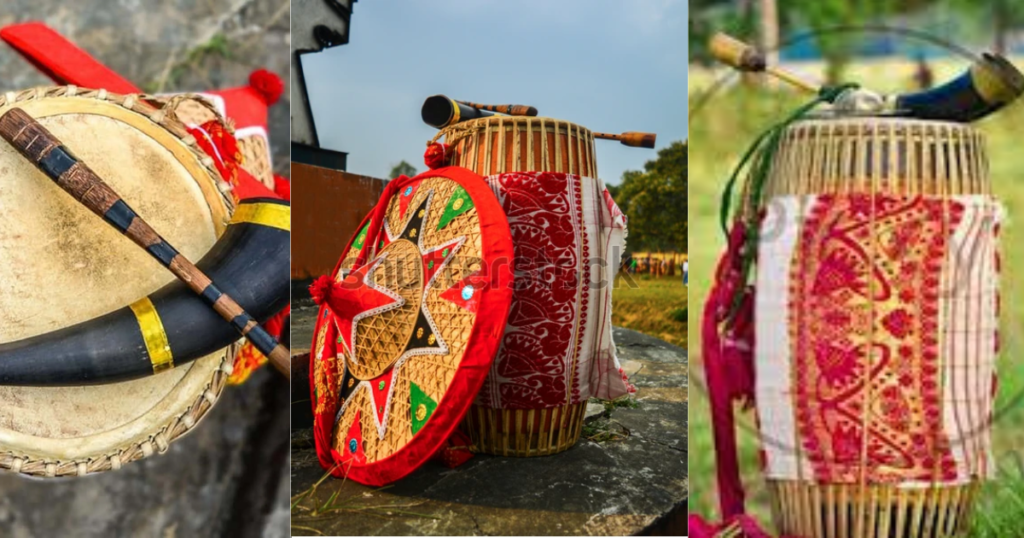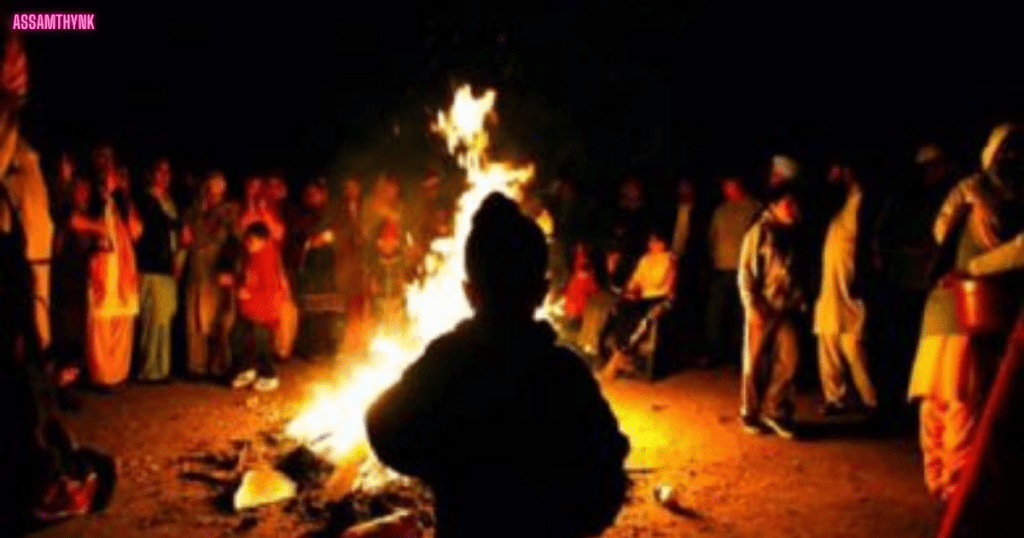Introduction
As the vibrant hues of spring begin to paint the landscape of Assam, a unique sense of joy and festivity fills the air. This is the season of Rongali Bihu, the most celebrated and widely cherished Festival of Assam. Marking the Assamese New Year, Bohag Bihu 2025 is not just a festival but an embodiment of Assam’s culture, spirit, and agrarian roots. It is a time when the state resonates with traditional music, joyful dance, delicious cuisine, and heartwarming reunions.
We delve into the essence of Rongali Bihu 2025, exploring its origins, cultural significance, rituals, and how it continues to evolve in the modern era while preserving its age-old charm.
What is Rongali Bihu?
Rongali Bihu, also known as Bohag Bihu, is one of the three Bihus celebrated in Assam. The other two are Kongali Bihu (in October) and Bhogali Bihu (in January). Rongali Bihu stands out as the most lively and colorful of them all.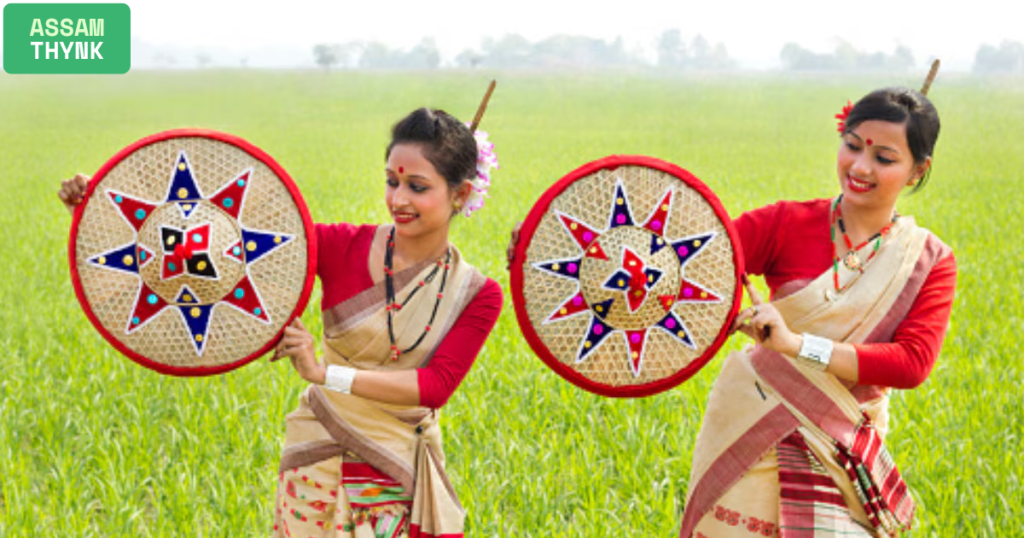
It marks the beginning of the Assamese month of Bohag (mid-April) and coincides with other harvest festivals celebrated across India like Vishu in Kerala, Pohela Boishakh in West Bengal and Bangladesh, Puthandu in Tamil Nadu, and Vaisakhi in Punjab.
In 2025, Bohag Bihu 2025 is expected to start on April 14, heralding a fresh new year filled with hope, prosperity, and togetherness.
Historical and Cultural Significance
The origins of Bihu Festival of Assam can be traced back to ancient agrarian traditions. It was a time when farmers prayed for a bountiful harvest and celebrated the changing seasons. The festival has deep links with nature, agriculture, and community bonding.
The word “Bihu” is believed to have originated from the Deori word “Bisu”, which means “to ask for prosperity and abundance”. Over the centuries, it has grown from a farming ritual into a grand celebration of Assamese identity.
Rongali Bihu, in particular, reflects the joy of spring – when farmers begin sowing paddy, trees blossom, and the landscape comes alive with fresh life. It also showcases the cultural unity of Assam’s diverse ethnic communities who come together, transcending religious and social differences.
Bohag Bihu 2025: Important Dates and Observances
Bohag Bihu 2025 will follow the traditional pattern of week-long celebrations. Each day has a unique significance:
1. Goru Bihu – April 13, 2025
The first day of Rongali Bihu is dedicated to cattle – the farmer’s companions in agriculture. On this day, cows and bulls are taken to nearby rivers or ponds for a ceremonial bath using turmeric and black gram paste. They are adorned with new ropes, and traditional songs are sung to honor them.
2. Manuh Bihu – April 14, 2025
This marks the Assamese New Year. People wear new clothes, seek blessings from elders, and exchange greetings. Young people offer gamosa (handwoven cotton towels) to elders as a mark of respect.
3. Kutum Bihu, Mela Bihu and More – April 15–20, 2025
The following days are filled with feasts, fairs, community dances, and family gatherings. Kutum Bihu involves visiting relatives and friends. Mela Bihu is about attending Bihu fairs (melas) where cultural performances, food stalls, and traditional games are held. Villages and towns reverberate with Bihu Geet (Bihu songs) and Bihu Naas (Bihu dance).
Bihu Geet and Bihu Naas:
One cannot talk about the Bihu Festival of Assam without mentioning its music and dance. The rhythmic beats of the dhol (drum), pepa (horn made from buffalo horn), and gagana (jaw harp) accompany the soul-stirring Bihu Geet.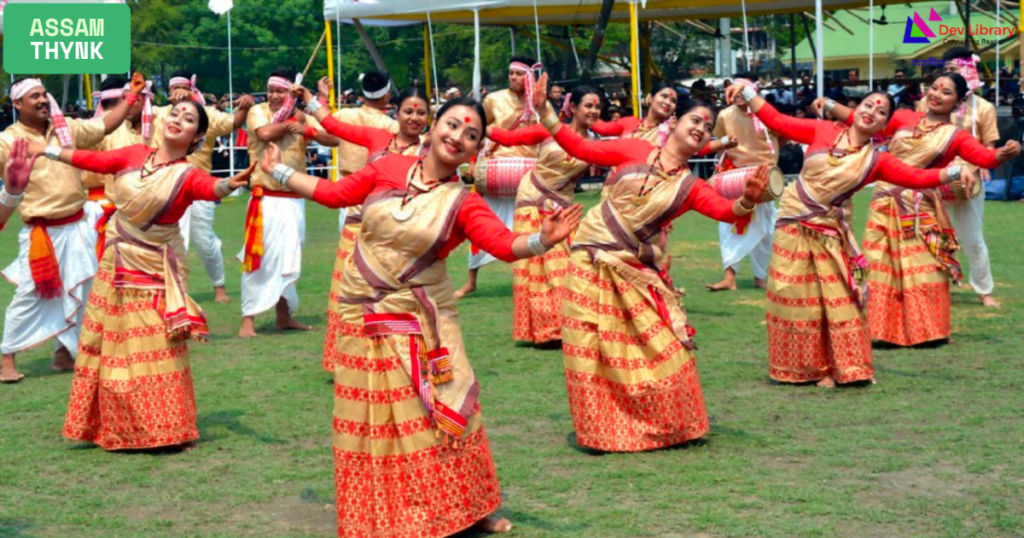
The lyrics often revolve around themes of love, nature, and youthful romance. Boys and girls in traditional attire gather in open spaces to perform the Bihu Naas, a dance full of energy, grace, and joy. The girls wear colorful mekhela chadors, often adorned with red borders, and ornaments made of gold and silver.
In 2025, expect new renditions of Bihu songs from rising Assamese artists, while the classics continue to charm people across generations.
Traditional Delicacies of Rongali Bihu
Food plays a central role in Bohag Bihu 2025. During the week, Assamese kitchens are filled with the aroma of freshly prepared traditional dishes. Some signature items include:
- Pitha: Rice cakes made of glutinous rice, coconut, jaggery, and sesame.
- Laru: Sweet balls made from coconut and jaggery.
- Xandoh Guri: Roasted rice flour eaten with curd and jaggery.
- Masor Tenga: A tangy fish curry.
- Khar: A unique alkaline dish made using sun-dried banana peels.
Rongali Bihu Across Assam
From Guwahati to Jorhat, Dibrugarh to Barpeta, and even in rural hamlets and tea gardens, Rongali Bihu 2025 will be celebrated with immense enthusiasm.
In Urban Areas:
Cities like Guwahati host grand Bihu Sanmilans – cultural evenings where folk artists, dancers, and musicians perform. Popular Bihu venues include Latasil Field, Chandmari, and Beltola. These events are also platforms to promote Assamese literature, cinema, and handicrafts.
In Rural Assam:
Villages maintain the rustic charm of Bihu – with community gatherings under open skies, traditional games like tekeli bhonga (pot breaking), buffalo fights, and folk theater performances.
Among the Assamese Diaspora:
Assamese communities in Delhi, Bangalore, Mumbai, and even abroad – in the USA, UK, and Middle East – organize Bihu celebrations that keep the cultural connection alive.
Bihu and Assam’s Identity
The Bihu Festival of Assam is more than a harvest or New Year celebration. It is deeply woven into the Assamese way of life. It fosters unity across caste, creed, and community. Bihu is also a symbol of Assam’s resilience, hospitality, and respect for nature.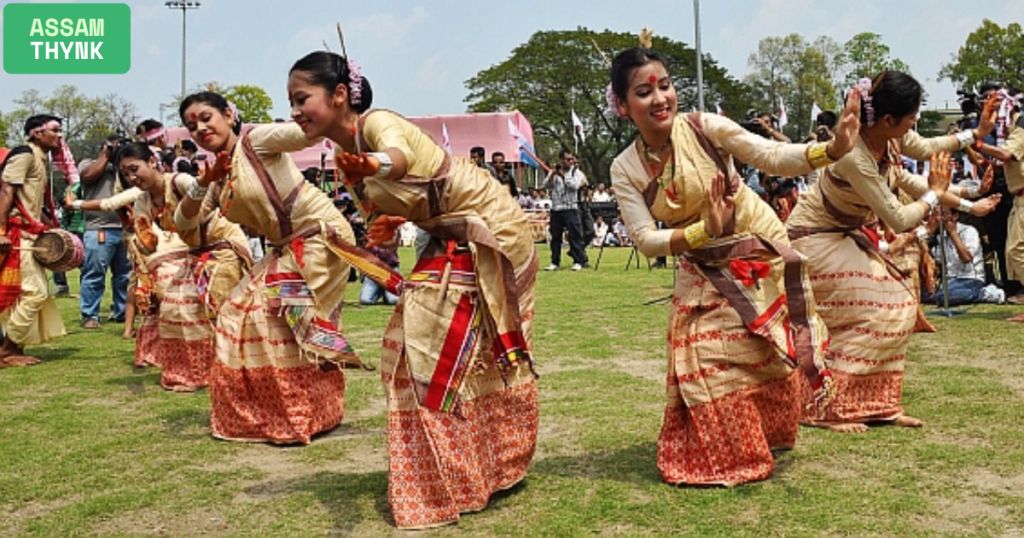
The gamosa, an inseparable symbol of Bihu, represents love, respect, and Assamese pride. Artists, politicians, and guests visiting Assam during Bihu often receive this as a token of honor.
How Bihu is Evolving in Modern Times
While Rongali Bihu 2025 continues to preserve traditional elements, it also embraces modernity:
- Digital Celebrations: Social media platforms will likely be flooded with Bihu reels, virtual dance competitions, and online cooking shows featuring Bihu recipes.
- Youth Participation: Schools and colleges organize Bihu workshops, cultural competitions, and essay contests to engage the younger generation.
- Sustainability Drives: Many Bihu committees are now adopting eco-friendly practices – reducing plastic use, promoting local crafts, and encouraging organic farming.
The integration of tradition and technology is helping Bihu remain relevant in the fast-paced world, while still echoing the soul of Assamese heritage.
Tourism During Rongali Bihu 2025
If you’re planning a visit to Assam, there’s no better time than during Rongali Bihu. Tourists can witness Assam’s culture at its finest – from traditional dances and fairs to local cuisines and crafts.
Tourism departments and private operators often organize special Bihu packages including visits to:
Kaziranga National Park
Majuli Island
Sivasagar (Ahom Monuments)
Tea Gardens of Dibrugarh
Satras (Vaishnavite Monasteries)
Participating in a rural Bihu celebration can be a transformative experience for any cultural enthusiast.
Rongali Bihu in Popular Media
Over the years, Festival of Assam – Rongali Bihu has been featured in various films, documentaries, and television programs. Assamese cinema frequently portrays Bihu in its stories, symbolizing joy, nostalgia, and rural romance.
In 2025, several Assamese musicians and digital creators are expected to release Bihu-themed content, fusing folk with contemporary beats, thus attracting global audiences.
Top 10 FAQs on Rongali Bihu 2025:
1. What is Rongali Bihu?
Rongali Bihu is the spring festival of Assam. It marks the Assamese New Year and celebrates nature, farming, and happiness.
2. When will Rongali Bihu be celebrated in 2025?
Rongali Bihu 2025 will start on 14th April. The celebrations usually last for a week.
3. Why is it called Bohag Bihu?
It is called Bohag Bihu because it falls in the Assamese month of Bohag, which is the first month of the Assamese calendar.
4. What do people do during Rongali Bihu?
People dance Bihu, sing traditional songs, wear new clothes, eat delicious homemade food, and visit family and friends.
5. What is Goru Bihu?
Goru Bihu is the first day of Rongali Bihu. On this day, farmers wash and decorate their cows to thank them for their hard work.
6. What is the meaning of the Gamosa?
The Gamosa is a special white cloth with a red border. It shows love, respect, and Assamese pride. It’s often gifted to elders and worn during Bihu dance.
7. What food is made during Rongali Bihu?
Traditional foods like Pitha, Laru, Jolpan, and Khar are made at home. These are mostly rice-based snacks and sweets.
8. Do people wear traditional clothes?
Yes! Women wear Mekhela Chador and men wear Dhoti and Kurta, often with a Gamosa on their shoulder.
9. Is Rongali Bihu a religious festival?
No, it’s not religious. Rongali Bihu is a cultural and seasonal festival celebrated by everyone in Assam.
10. Can tourists enjoy Rongali Bihu?
Absolutely! Visitors are welcome to join in the music, dance, food, and local fairs. It’s a great way to experience the culture of Assam.
Conclusion:
As Bohag Bihu 2025 approaches, Assam is gearing up to welcome the New Year with open arms and joyful hearts. This Festival of Assam is not merely about rituals and customs – it’s about celebrating life, love, nature, and the spirit of community.
Whether you’re a native Assamese, a traveler, or simply someone fascinated by India’s cultural diversity, Rongali Bihu is a celebration that will leave an everlasting impression.
Let us come together this Rongali Bihu 2025, dance to the rhythm of the dhol, savor the taste of pitha, and spread the message of peace and prosperity.

